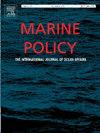战略生态系统监测和评估如何与海洋产业管理相关:海上风力发电
IF 3.7
2区 社会学
Q2 ENVIRONMENTAL STUDIES
引用次数: 0
摘要
在东北大西洋区域,通过《欧洲联盟海洋战略框架指令》部分实施了海洋管理的生态系统方法,该指令已以不同方式转化为支持国家立法框架。在实施生态系统方法的过程中,需要通过战略生态系统评估(SEcAs)定期审查海洋生态系统的健康和状况。这些都得到了战略性区域尺度生态系统监测的支持。SEcAs跟踪实现良好环境状况的进展,并确定与特定生态系统要素有关的主要问题。与此同时,旨在保护海洋环境的其他区域和国家立法框架需要另外三种形式的生态系统评估。公共计划和政策如有可能引致影响生态系统的人类活动,均须进行策略性环境评估,以确定这些计划的潜在影响。这些通常是区域性的。在较小的空间尺度上,个别开发项目,如海上风电场,在获得相关主管部门的同意和/或许可之前,需要进行环境影响评估(eia)和累积影响评估(CIAs)。许可框架通常需要在个别开发的规模上进行相关的有针对性的监测。本文以北海苏格兰地区为例,研究了这四个过程(SEcAs、SEAs、eia和cia)下的监测和评估如何相互作用。通过协调和数据共享,可以更好地协调这些立法框架,以改善对海洋环境的保护。本文章由计算机程序翻译,如有差异,请以英文原文为准。
How strategic ecosystem monitoring and assessments are relevant to the management of a marine industry: Offshore wind electricity generation
In the northeast Atlantic region, the ecosystem approach to marine management has been partly implemented through the European Union Marine Strategy Framework Directive, which has been variously transposed into supporting national legislative frameworks. Within this implementation of the ecosystem approach, the health and status of the marine ecosystem is required to be regularly reviewed by Strategic Ecosystem Assessments (SEcAs). These are supported by strategic regional-scale ecosystem monitoring. SEcAs track progress towards Good Environmental Status (GES) and identify principal concerns related to specific ecosystem elements. At the same time, other regional and national legislative frameworks aimed at protecting the marine environment require three additional forms of ecosystem assessment. Public plans and policies that may result in human activities which impact the ecosystem are required to have Strategic Environmental Assessments (SEAs) in order to identify any potential impacts of such plans. These are often on a regional scale. At a smaller spatial scale, individual developments, such as offshore wind farms, need Environmental Impact Assessments (EIAs) and Cumulative Impact Assessments (CIAs) before they are granted a consent and/or licence to progress by the relevant competent authority. Licensing frameworks generally require related targeted monitoring at the scale of individual developments. Using the Scottish region of the North Sea as a case study, this paper considers how monitoring and assessment under these four processes (SEcAs, SEAs, EIAs and CIAs) interface. Better harmonisation between these legislative frameworks may be possible through coordination and data sharing to improve the protection of the marine environment.
求助全文
通过发布文献求助,成功后即可免费获取论文全文。
去求助
来源期刊

Marine Policy
Multiple-
CiteScore
7.60
自引率
13.20%
发文量
428
期刊介绍:
Marine Policy is the leading journal of ocean policy studies. It offers researchers, analysts and policy makers a unique combination of analyses in the principal social science disciplines relevant to the formulation of marine policy. Major articles are contributed by specialists in marine affairs, including marine economists and marine resource managers, political scientists, marine scientists, international lawyers, geographers and anthropologists. Drawing on their expertise and research, the journal covers: international, regional and national marine policies; institutional arrangements for the management and regulation of marine activities, including fisheries and shipping; conflict resolution; marine pollution and environment; conservation and use of marine resources. Regular features of Marine Policy include research reports, conference reports and reports on current developments to keep readers up-to-date with the latest developments and research in ocean affairs.
 求助内容:
求助内容: 应助结果提醒方式:
应助结果提醒方式:


